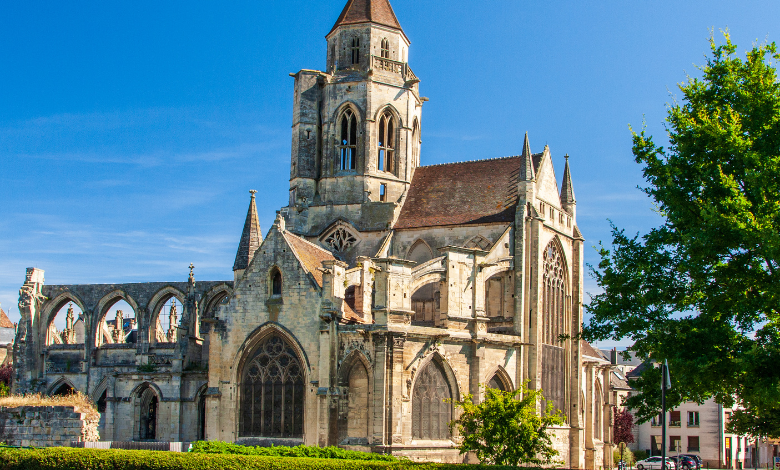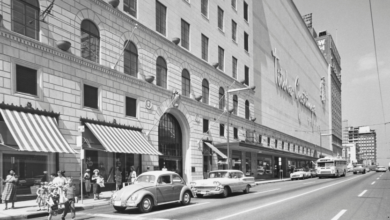Church of Saint-Étienne-le-Vieux: A Historic Jewel of Normandy

Nestled in the picturesque town of Caen, Normandy, the Church of Saint-Étienne-le-Vieux stands as a remarkable testament to medieval architecture and history. This ancient church, known for its stunning Gothic and Romanesque elements, offers a glimpse into the rich heritage of the region. This article explores the historical significance, architectural features, and cultural importance of the Church of Saint-Étienne-le-Vieux.
Historical Significance
The Church of Saint-Étienne-le-Vieux dates back to the 11th century, making it one of the oldest churches in Caen. It was originally constructed during the time of William the Conqueror, who commissioned many of the city’s notable buildings. Over the centuries, the church has witnessed significant historical events, including the turbulence of the Hundred Years’ War and the impact of the French Revolution.
The church has been a witness to the rise and fall of various historical figures and has served as a focal point for the local community. Its longevity and preservation are a testament to its historical importance and the dedication of those who have worked to maintain it.
Architectural Features
1. Romanesque Origins
The Church of Saint-Étienne-le-Vieux showcases its Romanesque origins through its sturdy, robust design. The original structure features thick stone walls, rounded arches, and a simple, yet imposing facade. The Romanesque style is characterized by its semi-circular arches, barrel vaults, and an overall sense of solidity and permanence.
2. Gothic Additions
In the 13th century, the church underwent significant modifications, incorporating Gothic elements into its design. The addition of pointed arches, ribbed vaults, and flying buttresses reflects the evolving architectural trends of the time. These Gothic enhancements not only increased the structural stability of the church but also allowed for larger windows, which are adorned with beautiful stained glass that filters light into the interior, creating a serene and mystical atmosphere.
3. Bell Tower and Spire
One of the most striking features of the Church of Saint-Étienne-le-Vieux is its bell tower and spire. The tower, built in the Romanesque style, serves as a landmark in the town. Its sturdy base and intricate carvings contrast beautifully with the slender, graceful spire that reaches towards the sky. The combination of these elements provides a visual representation of the church’s historical and architectural evolution.
Cultural Importance
1. Community Hub
The Church of Saint-Étinne-le-Vieux has long served as a central gathering place for the local community. It has hosted countless religious ceremonies, including baptisms, weddings, and funerals, making it an integral part of the community’s life and heritage.
2. Artistic Heritage
The church is renowned for its artistic treasures, including its intricate woodwork, medieval sculptures, and exquisite stained glass windows. These elements not only enhance the church’s aesthetic appeal but also reflect the artistic skill and religious devotion of the period in which they were created.
3. Preservation Efforts
In recent years, significant efforts have been made to preserve and restore the Church of Saint-Étinne-le-Vieux. Restoration projects aim to maintain the integrity of the church’s historical and architectural features while ensuring that it remains a vibrant part of the community. These efforts are crucial in safeguarding the church’s legacy for future generations.
Visiting the Church of Saint-Étienne-le-Vieux
For those interested in exploring the Church of Saint-Étienne-le-Vieux, several aspects enhance the visitor experience:
- Guided Tours: Local guides offer informative tours that delve into the history and architecture of the church, providing a deeper understanding of its significance.
- Special Events: The church hosts various cultural and religious events throughout the year, including concerts, art exhibitions, and traditional ceremonies.
- Accessibility: The church is located in the heart of Caen, making it easily accessible to visitors exploring the town’s other historic sites.
Conclusion
The Church of Saint-Étienne-le-Vieux is a shining example of Normandy’s rich historical and architectural heritage. Its blend of Romanesque and Gothic elements, combined with its deep cultural significance, makes it a must-visit for anyone interested in medieval history and architecture. As the church continues to be a focal point of community life and historical preservation, it stands as a testament to the enduring legacy of the past.



